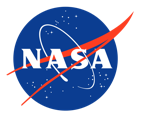





NASA Sun & Space
What can come within 5.3 million miles of the solar surface while moving at 364,610 miles per hour? It's the Parker Solar Probe! It achieved its latest solar flyby on June 22.
And Parker has another exciting feat coming up on August 21. Find out more: go.nasa.gov/44vUkSY
NASA’s Starling Mission Sending Swarm of Satellites into Orbit
July of 2023, NASA was sending a team of four six-unit (6U)-sized CubeSats into orbit around Earth to see if they’re able to cooperate on their own, without real-time updates from mission control. While that kind of autonomous cooperation may not sound too difficult for humans, this team will be robotic – composed of small satellites to test out key technologies for the future of deep space missions, where more complex and autonomous spacecraft will be essential.
Learn more: go.nasa.gov/44FOYEQ
Our Parker Solar Probe takes another hot lap around the Sun, @NASAWebb spots a distant active supermassive black hole, and we're back in touch with the Ingenuity #MarsHelicopter.
Subscribe for more space and aeronautics in your life: nasa.gov/subscribe
NASA Ascent Imagery highlights of STS-135's launch in 2011, as Atlantis closed out the 30-year career of the Space Shuttle.
These NASA videos were always amazing, using clips from the 100+ engineering cameras used to film Shuttle launches.
“On the shoulders of the Space Shuttle, America will continue the dream.” 🚀🇺🇸
Travel to Croatia in this mini-documentary
from the@GLOBEProgram!
Learn how students and teachers in Croatia are contributing to one of the largest international citizen science projects, collecting data for @nasa and others.
How is an exploding star like a tape measure?
It’s no riddle! Astronomers measure distances to faraway galaxies using a kind of supernova called type Ia. We know how much light they emit, so we can infer their distance by how bright they appear! #NationalTapeMeasureDay